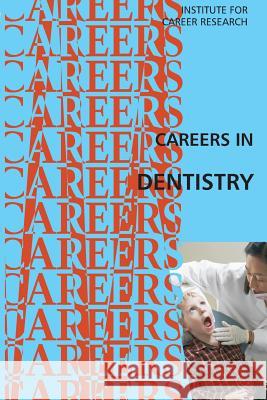Careers in Dentistry » książka
Careers in Dentistry
ISBN-13: 9781523240791 / Angielski / Miękka / 2016 / 36 str.
MOST PEOPLE DO NOT LOOK FORWARD to visiting the dentist. Many avoid it as long as possible. Yet those same people will leave the dentist's office relieved, often with big smiles (assuming the Novocain has worn off). What most people do not realize is that the profession of dentistry has come a long way in recent years. New techniques and technologies such as lasers and air abrasion devices have changed the way dentists treat patients. A visit no longer has to be a source of dread. Dentistry involves more than just teeth alone. A dentist provides healthcare for the oral cavity, including soft tissue and bone, as well as the associated head and neck region. A typical dentist visit starts with an examination of the patient's teeth and mouth tissue. Based on what the dentist finds, a diagnosis is made and a treatment plan is proposed. Treatment may include removing tooth decay, filling cavities, repairing damaged teeth, extracting teeth, and/or replacing lost teeth. Most dentists are generalists who provide a wide array of services. On a given day, a general dentist will see people of all ages and backgrounds - sometimes entire families. There is never a dull moment because dentists never know who will be in the examining room, or what they will need. A patient could just be there for a checkup and cleaning. In that case, the dental hygienist on staff will take care of the cleaning, and the dental assistant will take a set of x-rays. The dentist will look at the x-rays in search of problems that need to be addressed right away or point out possible problems that need to be watched. The next patient could be suffering from a damaged tooth, broken during a fall. The dentist will need to determine if and how the tooth can be saved, and provide immediate treatment. There are also dentists who practice in certain specialized areas of dentistry. There are nine specialties recognized by the American Dental Association (ADA). Each requires additional training, but the payoff is a higher than average income for the licensed specialist. The most popular specialties are orthodontics (teeth straightening) and prostho-dontics (artificial teeth). Dentists are highly educated professionals. It takes four years of undergraduate studies as a pre-dental student, followed by another four years in dental school. In order to get into dental school, the applicant must first take the Dental Acceptance Test (DAT) by their junior year in college. Getting into dental school is competitive so scoring well on the test is important. Many students take practice tests, sometimes as early as high school. Dental school is a rigorous mix of classroom instruction and hands-on clinical work. Upon graduation, dentists need to obtain a license to practice. Specific licensure requirements vary by state. Newly minted dentists can look forward to one of the best careers available today. They are well compensated with a median annual income of $150,000. Even those starting out can expect to earn at least $65,000 in their first year of practice. Those who take the time to become specialists can earn more than $180,000. Dentistry is also a stable career with more opportunities than the available dentists can fill. There is a growing demand for dentists that is not expected to slow down any time soon. Perhaps most important of all is the agreeable work-life balance dentists enjoy. Most dentists work in private practice and can decide for themselves how much they want to work. Dentistry is one of the few professional careers that actually offers the chance to work part time without losing traction. If you have an interest in healthcare, and like to work with your hands as well as your mind, dentistry is worth a look."
Zawartość książki może nie spełniać oczekiwań – reklamacje nie obejmują treści, która mogła nie być redakcyjnie ani merytorycznie opracowana.











